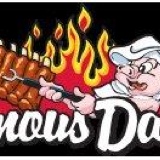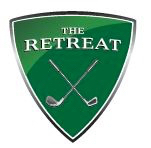Information
-
Weekly Safety and Health Checklist
Centers are required to conduct and document weekly/ monthly inspections. Results of the inspection are recorded below. In the event a deficiency is identified that cannot be corrected , the Safety Officer will submit a maintenance Work-Order. Completed checklists must be returned to the Center Safety Officer, based on center policies. The General Safety and Health Checklist applies and should be attached to this checklist
-
Safety Officer/Officers completing the inspection?
Weekly Food services inspection
-
Temperatures for refrigerators and freezers are recorded daily. (Seven days a week)
-
All refrigerators and freezers have a separate mechanical gauge.
-
Original container or approved secondary dispenser, properly labeled.
-
Food properly protected during storage, preparation, display, service, and transportation.
-
Persons with infection are prohibited from working.
-
Hands are washed and clean, good hygienic practices.
-
Clothes are washed and clean; hair is restrained.
-
Food contact surfaces are clean and properly maintained.
-
Non food surfaces are are clean and properly maintained.
-
Dish washing facilities are properly maintained and operated.
-
Wash, rinse water clean;
-
Sanitizing rinse, clean; Rinse temperature recorded daily. (180 degrees without sanitizer. 150 or above with sanitizer)
-
Wiping cloths: clean, stored, and limited in use.
-
Water source is safe; hot and cold water under pressure.
-
Toilet and hand washing facilities are adequate in number, accessible, and properly cleaned.
-
Toilets rooms are enclosed, self closing doors, fixtures are in good repair, hand cleaner, hand drying device, soap, toilet tissues, waste receptacles, provided with adequate ventilation.
-
Waste containers are covered; adequate in number, insect/rodent proof, clean, not overflowing, and lids are closed
-
Area is free of insect, rodents, birds, or other animals.
-
All egress doors close and positively latch.
-
Floors: properly constructed, drained, clean; good repair; no debris.
-
Walls and ceiling: properly constructed; good repair; clean surfaces.
-
Proper ventilation; no odors; steam condensation.
-
Dressing rooms: clean; lockers provided; facilities used.
-
Necessary toxic items properly stored, labeled, and used. Separate storage required.
-
Premises maintained free of liter, and unnecessary articles.
-
Cleaning / maintenance equipment and supplies properly stored.
-
Clean/soiled linen separated and properly stored.
General requirements
-
All student's doors and any door on an egress corridor must close and positive latch on its own. No door can be held open by any devices that will not release the door when the fire alarm is activated.
-
All entrances/ exit doors to egress hallways are fully operational and bear the appropriate fire rating. Frame and door should have a fire rating tag. No holes or breakage in the door.
-
All fire egress maps include:<br>(A) Primary and secondary escape routes.<br>(B) " You are Here " marking.<br>(C) Location of pull stations and fire extinguishers along primary and secondary escape routes.
-
All panic bars are in good condition and operational.
-
All exit lights are in good condition and operational.
-
All emergency lights are in good condition and operational.
-
All ceiling tile are in place and and do not have a hole or crack greater than 1/8th".
-
All electrical panels have a 3 foot entry way to panel. All panel doors close and lock.
-
Permanent electrical circuits are utilized in place of extension cords.
-
Area if free of missing tiles from the floor, ceiling, or wall.
-
Walking surfaces are free or tears, bumps, sags in the carpet, or other tripping hazards.
-
Area is free of broken/cracked glass in doors or windows.
-
Materials are safely stacked and not within 18" vertically or 36" horizontally or a sprinkler head.
-
Area is free of missing lens cover on ceiling /overhead study lights.
-
Sidewalks are free of cracks in excess of 1/4"
-
Dryer vents are clean.
-
Area is free of water/liquid on floors.
-
All egress light fixtures are operational.
-
All exterior light fixtures are operational. (Security)
-
Cleaning materials are properly stored not in student rooms or left unattended in public areas.
-
All flammable and hazardous materials as properly stored. When not in use. (Flammable and hazardous materials cabinets are closed at all times)
-
All flammable and hazardous cabinets are vented to outside.
-
All janitor, elevator, and mechanical room doors are closed and locked.
-
All GFCI receptacles are operational.
-
Electrical panels are labeled appropriately.
-
Electrical panel knockouts are in place.
-
Grinders (portable and stationary) have guards in place
-
SDS's openly available to all employees.
-
Light bulbs protected from breakage.
-
Foot protection worn as required (steel toed or slip resistant closed toe)
-
Area is free of evidence of vermin.
-
Date of inspection
-
Signature of inspector
-
Center Director
-
Safety Committee Members present for the inspection
- Finance Director
- Student training Director
- Social Development Director
- Human Resources Manager
- Career Tech. Manager
- Student Government Member
- Other











